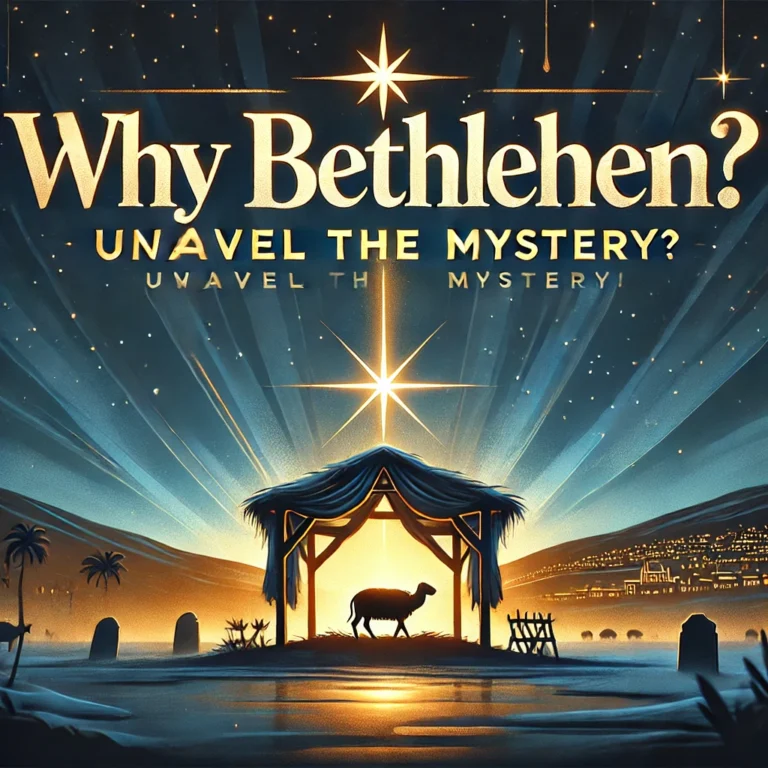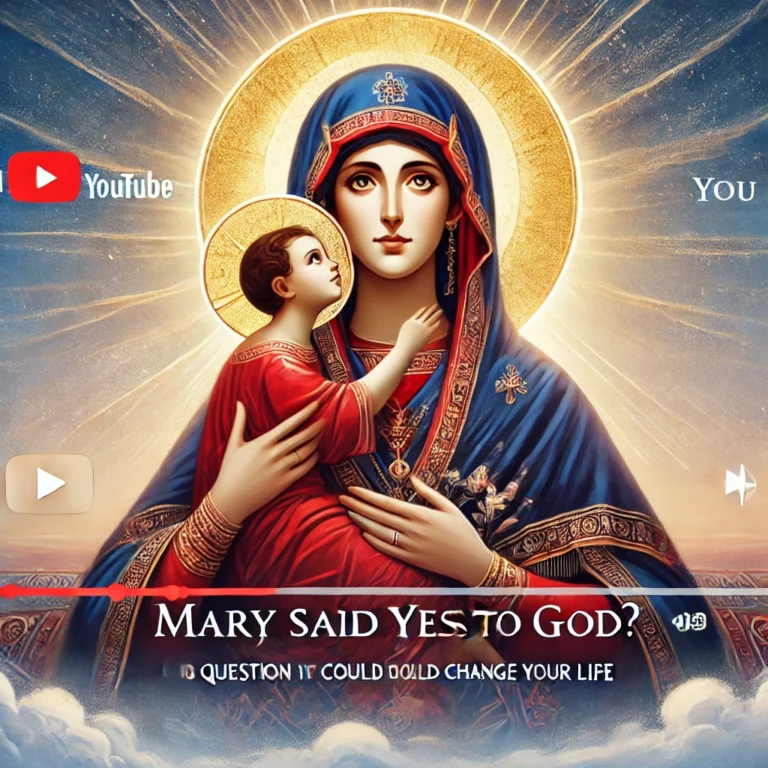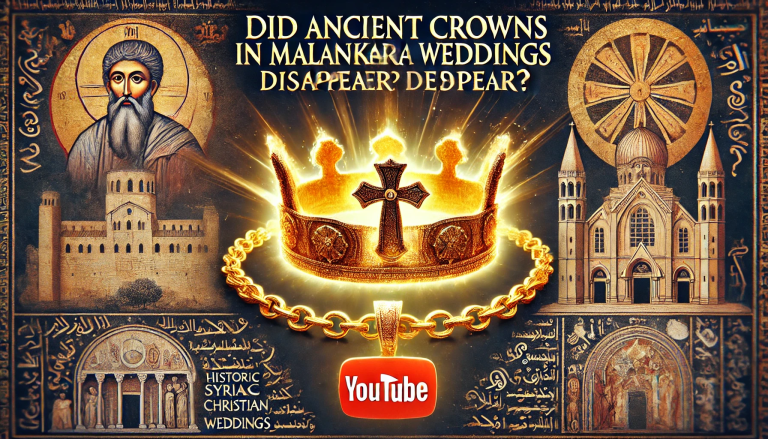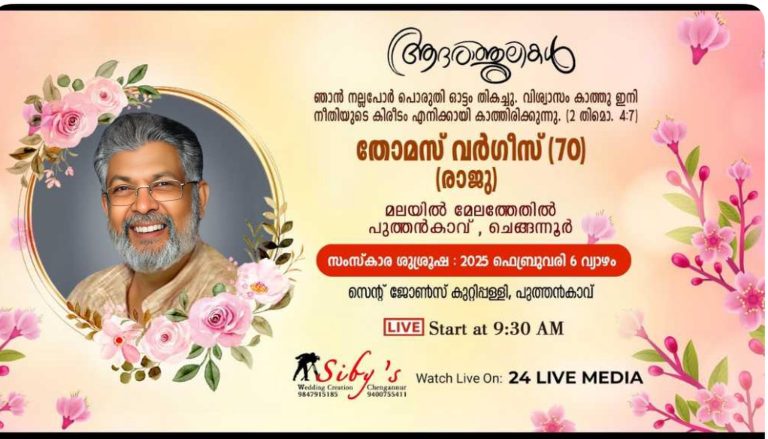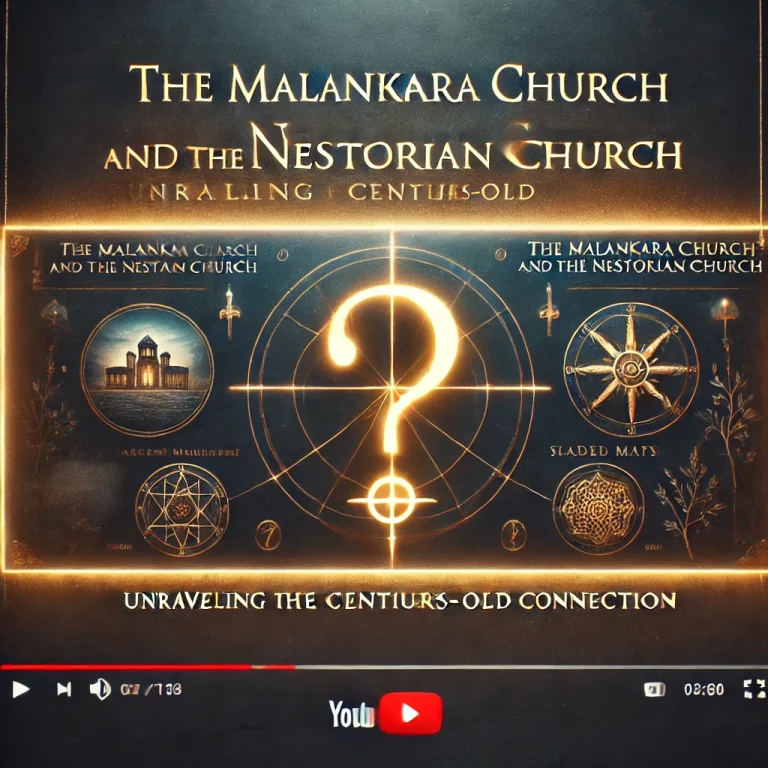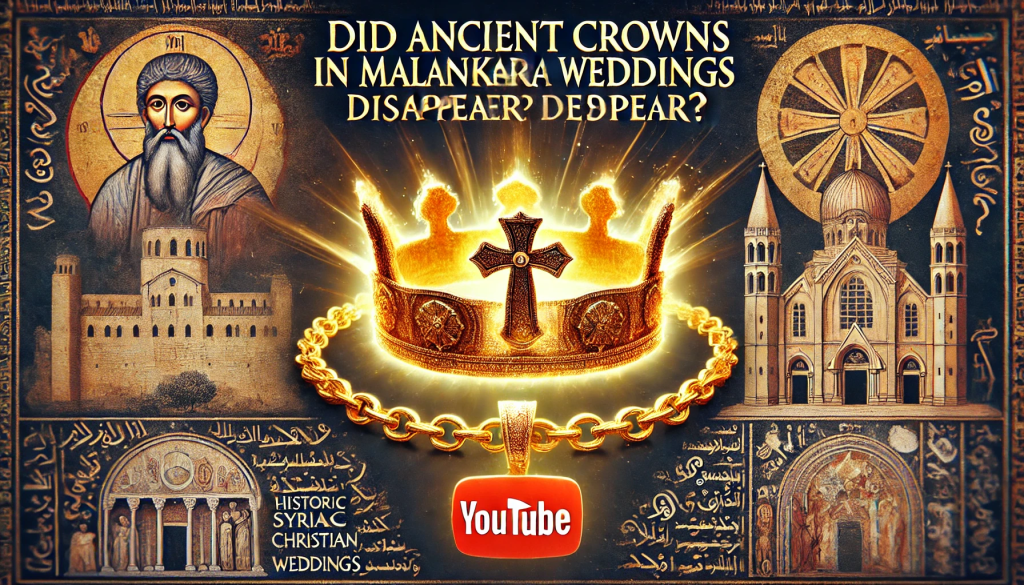
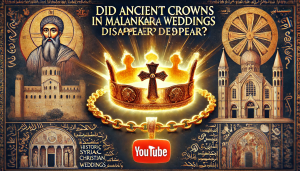
The historical significance and evidence of the use of crowns in the Malankara Orthodox Syrian Church’s marriage liturgy are deeply rooted in early Christian traditions, Syriac liturgical practices, and cultural adaptations unique to Kerala.
The use of crowns in the Malankara Orthodox Syrian Church’s marriage liturgy is an intricate synthesis of early Christian theology, Syriac liturgical tradition, and Kerala’s unique cultural influences. While transitioning from physical crowns to symbolic chains (Minnu) is often considered a mystery, historical records, theological symbolism, and regional practices reveal a deliberate adaptation rooted in doctrinal fidelity and socio-religious pragmatism. This study explores the historicity of this development, its theological significance, and liturgical implications, drawing upon documentary evidence and scholarly research.
Theological Roots and Early Christian Influence
Biblical and Patristic Foundations
The crowning ritual (Mystery of Crowning) in Malankara matrimony is deeply rooted in early Christian symbolism, where crowns signified victory over sin and the couple’s role as “king and queen” of their new domestic Church. This aligns with St. Paul’s reference to the Crown of Righteousness (2 Timothy 4:8) and St. John Chrysostom’s association of crowns with marital purity and divine blessing.
Theological Justification for Synthesis
The Malankara Church’s incorporation of pre-Christian elements reflects its theology of inculturation, which embeds Christian sacraments within the local cultural framework without compromising doctrinal integrity. For instance:
- The Minnu, with its cross-over-leaf design, symbolizes Christ’s victory over pre-existing spiritual traditions while honoring Kerala’s agrarian identity—where the banyan tree holds sacred significance in Hinduism.
- The Manthrakodi, serving as bridal attire and a funerary shroud, underscores the Christian belief in marriage as an eternal covenant, resonating with Hindu and Jewish views on the continuity of marital bonds beyond death.
The Manthrakodi and Minnu epitomize Kerala’s distinct religious landscape, where Hindu, Jewish, and Christian traditions organically coalesced. Historical artifacts, liturgical texts, and enduring rituals attest to how the Malankara Church reinterpreted pre-Christian symbols to affirm theological truths while preserving cultural identity. This synthesis reflects Kerala’s pluralistic heritage and highlights the adaptability of Christian sacraments within diverse cultural contexts.
Syriac Liturgical Tradition: Now the Malankara Church follows the West Syriac Rite, earlier it was the East Syriac Rite, where crowning is central to the marriage sacrament. The ritual includes prayers emphasizing the couple’s spiritual authority and union as a reflection of Christ and the Church. Early Syriac hymns, such as those by St. Ephrem the Syrian, further highlight the mystical union symbolized by crowns.
Adaptation in the Malankara Context
From Crowns to Chains: Unlike Byzantine or Coptic traditions, the Malankara Orthodox Church uses a “chain” (often with a cross pendant) instead of a physical crown. This adaptation reflects Kerala’s cultural context, where the “Minnu” (a gold thali) and chains are traditional symbols of marriage. The chain’s seven strands represent the couple, their parents, and the Church, merging local customs with Christian theology.
Symbolic Meanings:
Authority and Victory: The crowns/chains signify the couple’s divine mandate to govern their household and overcome spiritual adversities.
Eternal Reward: The liturgy references the “crown of righteousness,” linking marital fidelity to eternal salvation.
Liturgical Structure and Historical Evidence
Twofold Sacrament: The marriage ceremony comprises the “Blessing of the Rings” (betrothal) and “Blessing of the Crowns” (wedding). Historically, these were separate rites but are now conducted together. The crowning ceremony includes prayers invoking biblical couples like Abraham and Sarah, reinforcing continuity with Old Testament covenants.
Manuscripts and Prayers: Ancient Syriac liturgical texts, such as the “Book of Hudaya,”” describe the crowning ritual. Prayers during the ceremony invoke the Holy Trinity and emphasize the priest’s role as a mediator of divine grace, reflecting the Church’s sacramental theology.
Cultural Synthesis and Regional Practices
The cultural synthesis seen in the Malankara Orthodox Syrian Church’s marriage traditions, mainly through the “Manthrakodi” (veil) and “Minnu” (sacred pendant), reflects a profound blending of Hindu, Jewish, and early Christian influences unique to Kerala’s socio-religious history. Below is a detailed analysis of these syncretic elements and their historical evidence:
Hindu Influences in Design and Symbolism
“Minnu’s Banyan-Leaf Design”: The Minnu’s traditional shape resembles the Hindu “thali” (a pendant tied during Hindu weddings), which often features a sacred banyan leaf. However, Christians adapted this by superimposing a “cross” over the leaf, symbolizing the fusion of local Hindu aesthetics with Christian theology. This hybrid design signifies Kerala’s syncretic heritage, where pre-Christian symbols were reinterpreted within a Christian framework.
Manthrakodi as Bridal Attire: The Manthrakodi, a richly embroidered silk sari gifted by the groom’s family, mirrors Hindu bridal customs where the “pudava” (new cloth) symbolizes marital transition. Draping the Manthrakodi over the bride’s head parallels Hindu rituals of veiling, signifying protection and familial integration.
Jewish Traditions in Ritual Practices
Bridal Position: In Malankara weddings, the bride stands to the groom’s “right,”” a practice rooted in Jewish tradition. This custom, unique to Kerala’s Syrian Christians, reflects their historical ties to Jewish communities, possibly through early converts from Cochin’s Jewish settlers.
- Jewish Influences: The bride standing to the groom’s right (a Jewish custom) and the use of unleavened bread (Pesaha) during Lent highlight adaptations from Kerala’s Jewish communities, documented in travelogues such as those of Tavernier (1676) and Niccolo Manucci (17th century).
- Practical Considerations: Chains proved more durable in Kerala’s humid climate and aligned with local jewelry customs, ensuring accessibility and acceptance within the community.
Veiling and Humility: The Manthrakodi’s use as a veil during the ceremony echoes Jewish bridal customs, where married women cover their heads in humility. The ritual parallels Rebekah’s veiling in the Old Testament (Genesis 24:65), symbolizing modesty and devotion.
Unleavened Bread (Pesaha): Shared with Kerala’s Jewish communities, the practice of preparing unleavened bread during Lent—pierced to prevent rising—highlights a preserved Judeo-Christian heritage.
c) Synthesis of Hindu and Jewish Elements
Minnu’s Thread Ritual: The Minnu is tied using “21 threads” extracted from the Manthrakodi, divided into seven sets of three strands. These numbers hold dual symbolism:
“Hindu Numerology”: The number 21 (3×7) aligns with Hindu sacred numerology, while seven represents cosmic order.
Christian Theology: The three strands signify the Trinity, and seven symbolize sacraments or the couple’s families (bride, groom, parents, and Church). This merging of Hindu numerical symbolism with Christian doctrine exemplifies cultural adaptation.
Knot-Tying Ritual: The groom ties the Minnu using a “reef knot” (Aan-Kettu), a practice shared with Kerala’s Brahmin and Cochin Jewish communities. This ritual underscores a shared cultural lexicon across religions in Kerala.
Historical Evidence of Syncretism
Artifacts and Liturgical Texts: The Persian crosses of Kerala (e.g., at Kottayam) with Pahlavi inscriptions suggest early interactions with Syriac Christians, who likely incorporated local Hindu and Jewish practices into their liturgy. Manuscripts like the “Book of Hudaya” describe crowning rituals adapted to include regional symbols like the Minnu.
Funerary Practices: The Manthrakodi shrouds the bride in death, mirroring Hindu traditions where the bridal sari is preserved for cremation. This reflects a shared cultural emphasis on the eternal bond of marriage.
Scholarly and Comparative Insights
Comparative Studies: Scholars like Sr. Jolly Vasupurathukaran Pavunny note that Malankara’s marriage rites emphasize the “mystical dimension” of union, contrasting with the Latin Church’s focus on human consent. This underscores the Syriac emphasis on divine mystery.
Historical Artifacts: The “Persian crosses” found in Kerala (e.g., at Kottayam and Kadamattom) with Pahlavi inscriptions suggest early interactions with Persian Christians, though debates persist about their Manichaean or Nestorian origins. These artifacts indirectly support the antiquity of Syriac liturgical practices in Malankara.
Syriac Roots and Early Practices
The Malankara Church’s liturgical practices derive from the West Syriac Rite, which historically emphasized the Mystery of Crowning (meshtutho) as a central aspect of marriage. Early Syriac texts, such as the Book of Hudoye (12th century), describe crowning rituals that symbolize the couple’s role as “king and queen” of their new household. This tradition aligns with Antiochian Christian customs, and evidence from Byzantine and Coptic rites indicates that crowns signified victory over sin and the couple’s spiritual authority.
Archaeological findings, such as the Persian crosses of Kerala (7th–9th century), inscribed with Pahlavi and Syriac scripts, further confirm the presence of a well-established Syriac Christian community with distinct liturgical practices. Additionally, 16th-century Portuguese missionary accounts, including the Jesuit Letters of Goa, document the use of crowns in pre-colonial Malankara Christian weddings.
Shift to Chains: Cultural and Practical Adaptation
By the 17th century, Malankara weddings replaced crowns with the Minnu (a gold pendant on a chain). Several factors influenced this shift:
- Hindu Cultural Synthesis: The Minnu’s banyan-leaf design, overlaid with a cross, mirrors the Hindu thali (a marriage pendant), reflecting Kerala’s syncretic heritage. The seven strands of the chain represent the couple, their parents, and the Church, merging Hindu numerology with Christian theology.=
Colonial Pressures and Liturgical Resilience
The Synod of Diamper (1599), enforced by Portuguese missionaries, sought to Latinize Malankara practices, condemning indigenous rituals as “pagan.” This suppression led to the resistance marked by the Coonan Cross Oath (1653), where the Malankara Church reaffirmed its Syriac heritage. The continued use of the chain ritual—despite external pressures—demonstrates the Church’s resilience in preserving its liturgical identity.
Theological Implications: Symbolism and Sacramentality
Crowns as Eschatological Symbols
The original crowning ritual drew from Pauline theology, where the “crown of righteousness” (2 Timothy 4:8) symbolized the couple’s journey toward salvation. In Malankara liturgy, the chain retains this eschatological meaning, as evidenced by the wedding prayer: “By laying aside these temporary crowns, make them worthy, O Lord, to be among the guests at Your heavenly table.” This shift reflects a theological evolution from physical adornment to spiritual anticipation of the Kingdom of God.
Sacramental Union and Domestic Church
The chain’s seven strands symbolize the domestic Church (the couple, parents, and Church), emphasizing communal responsibility. The groom tying the Minnu around the bride’s neck mirrors the priestly act of binding in Syriac tradition, signifying divine mediation. The ritual underscores marriage as a sacrament (ܡܰܫܬܘܬܳܐ, meshtutho), where the couple embodies Christ’s union with the Church (Ephesians 5:32).
Inculturation and Theological Flexibility
The Malankara Church’s adaptation exemplifies inculturation theology, where Hindu and Jewish symbols are reinterpreted through a Christian lens. For example:
- The banyan leaf (Hiawatha)—sacred in Hinduism—becomes a platform for the cross, symbolizing Christ’s triumph over pre-Christian traditions.
- The Manthrakodi (bridal veil) blends Jewish modesty customs with Hindu bridal attire, representing protection and familial integration.
Liturgical Evolution and Ritual Structure
From Betrothal to Coronation
The Malankara marriage liturgy comprises two main phases:
- Blessing of the Rings: Rooted in Old Testament betrothal narratives (e.g., Rebecca and Isaac in Genesis 24:53), the rings symbolize a covenant mediated by the priest, acting as God’s representative.
- Blessing of the Crowns/Chains: Originally separate rites, these were merged post-17th century. The chain is waved in a cross shape over the couple, echoing Byzantine coronation gestures while incorporating local symbolism.
Gestures and Embodied Theology
Bodily actions—such as the priest’s hand gestures and the couple’s positioning—draw from Syriac liturgical anthropology, where physical movements (e.g., bowing, veiling) embody divine-human dialogue. The Manthrakodi’s dual role as bridal attire and funerary shroud reflects a sacramental view of marriage as an eternal covenant.
Cultural Synthesis: Bridging Traditions
Hindu-Jewish-Christian Syncretism
- Minnu’s Design: The Hindu thali fusion with the Christian cross illustrates how Malankara rituals absorbed indigenous symbols while reinterpreting them through Christological themes.
- Jewish Parallels: The Pesaha bread ritual and bridal positioning reflect Kerala’s historical Jewish diaspora, preserved through centuries of trade and interfaith coexistence.
Architectural and Artistic Synthesis
Churches in Kerala often blend Syriac cross motifs with Hindu temple architecture (e.g., wooden carvings and open courtyards), creating sacred spaces that resonate with local aesthetics while maintaining Orthodox theology.
Scholarly Debates and Historical Evidence
Manuscripts and Artifacts
- Persian crosses at Kottayam (7th–9th century) with Pahlavi inscriptions suggest early Syriac influence, though their exact liturgical role remains debated.
- The Book of Hudoye and 17th-century liturgical manuscripts confirm the continuity of crowning rituals, albeit adapted to chains.
Theological Critiques
Some scholars argue that the shift to chains diluted the sacramental gravity of crowning. However, others, like Fr. Johnson Punchakonam, emphasize that the chain’s symbolism retained the rite’s theological core while ensuring cultural relevance.
Conclusion: A Living Tradition
The marriage liturgy of the Malankara Church is neither a fossilized relic nor a haphazard fusion of elements. Its evolution—from crowns to chains—reflects a dynamic interplay of theology, history, and cultural resilience. The Church demonstrates how ancient traditions can adapt without compromising doctrinal integrity by preserving Syriac sacramental theology while embracing Kerala’s pluralistic heritage.
This synthesis, documented in liturgical texts and embodied in rituals, highlights the Malankara Orthodox Syrian Church’s enduring role as a bridge between East and West, past and present. The crowns (or chains) in Malankara matrimony serve as profound symbols of this convergence, embodying a rich theological, historical, and cultural heritage. Rooted in early Syriac Christianity, they have evolved through Kerala’s distinctive socio-religious landscape, blending biblical imagery with local traditions. Liturgical manuscripts, comparative studies, and artifacts such as the Persian crosses provide tangible evidence of this ritual’s enduring significance—not only as a sacramental act but also as a cultural emblem.
